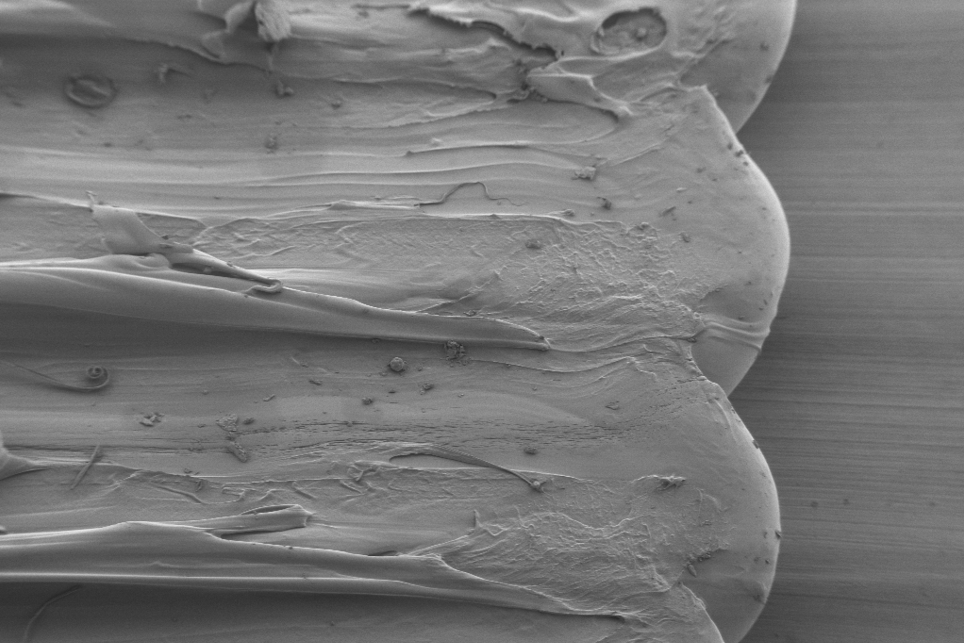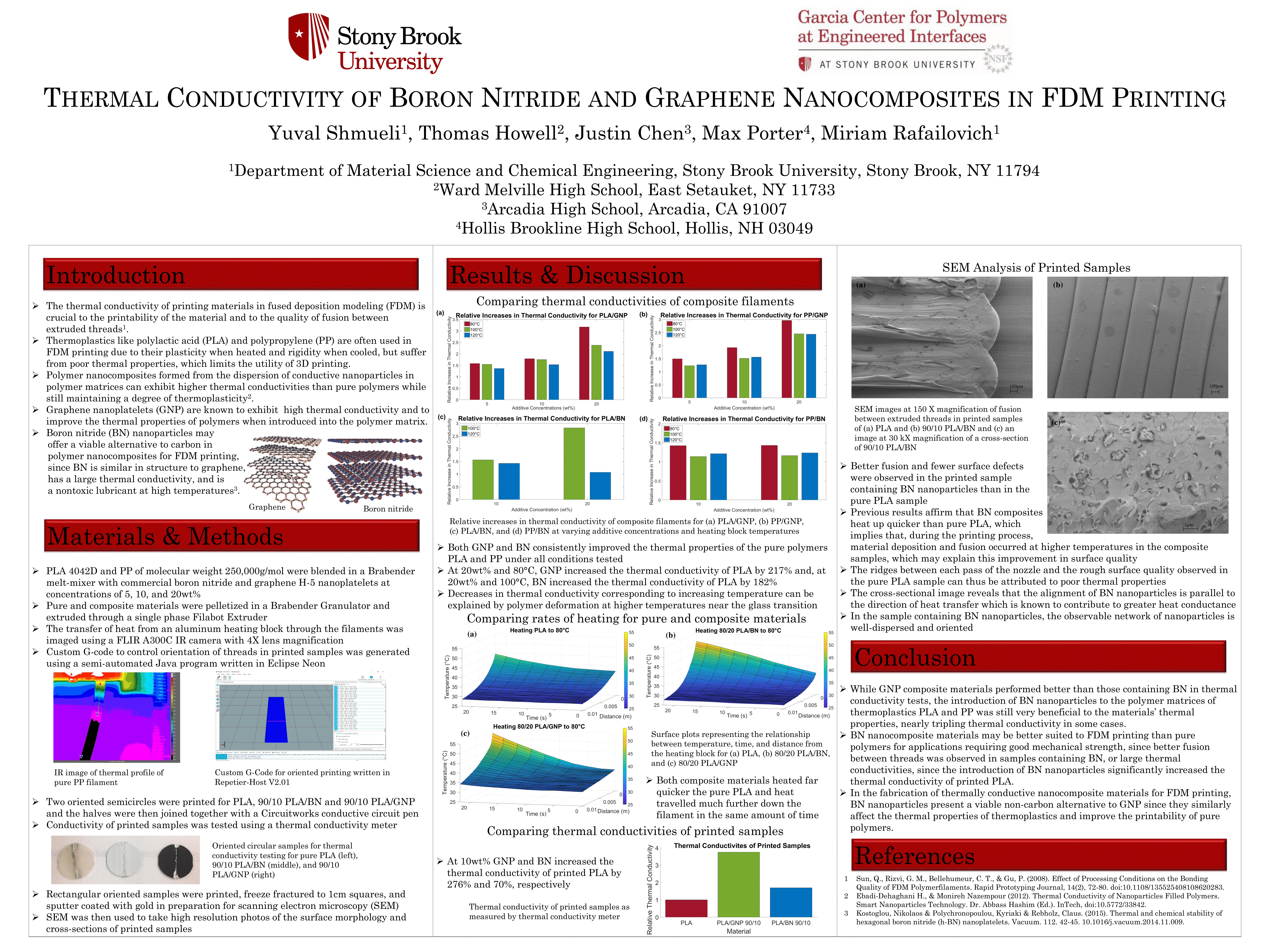Research > Nanocomposite Fabrication for FDM Printing
Nanocomposite Fabrication for FDM Printing
Garcia Center for Polymers at Engineered Interfaces
July 2017 - November 2017
 Figure 1: SEM image at 160 X magnification of fusion between extruded threads of PLA.
Background and Research Goals
Figure 1: SEM image at 160 X magnification of fusion between extruded threads of PLA.
Background and Research Goals
Fused deposition modeling (FDM) is a common method of 3D printing in which
filament is melted and extruded onto a build platform. Currently, bond strength
between deposited threads suffers as a result of the poor thermal properties of
available printing materials, which also limit the usefulness of FDM printing in
applications involving heat transfer. Polylactic acid (PLA) and polypropylene (PP)
are two thermoplastic polymers used in FDM printing, but both exhibit low thermal
conductivities. Graphene nanoplatelets (GNP) and boron nitride (BN) nanoparticles
are thermally conductive particles that can be dispersed into polymer matrices
to improve the material’s thermal properties. This research was focused on fabricating nanocomposites
from the aforementioned thermoplastics and nanoparticle additives and extruding filaments for
thermal conductivity testing. Printed samples were also tested and it was found that
the additives significantly improved the thermal conductivities of both filaments
and printed products. Additionally, scanning electron microscopy (SEM) revealed
that the additives improved fusion between extruded threads in the printing process
and that the nanoparticles in printed samples were oriented in the direction of heat
flow. This research was conducted at Stony Brook Univeristy as part of the
Garcia Center for Polymers at Engineered Interfaces.
MRS Conference Poster Session
Upon submission of research findings, my research team and I were invited to present our results at the Materials Research Society 2017 Fall Meeting & Exhibit. I personally created the following poster and presented our research at the conference.
Summary of Work
For a summary of work conducted between July 2017 and November 2017, see the memo below or click here to open the document in a new tab.
